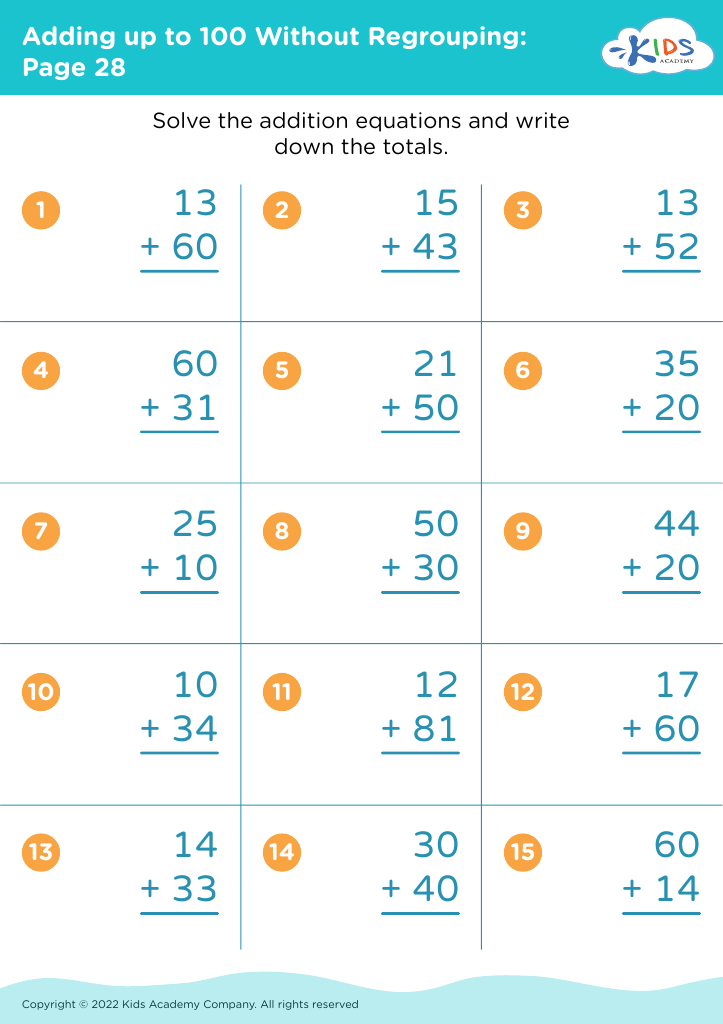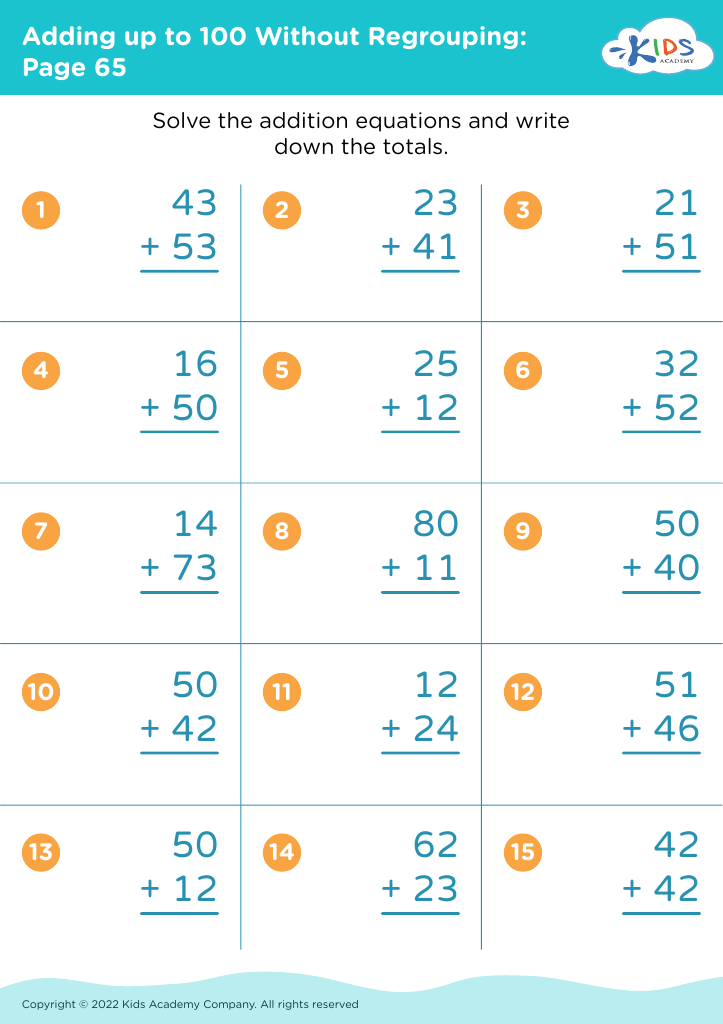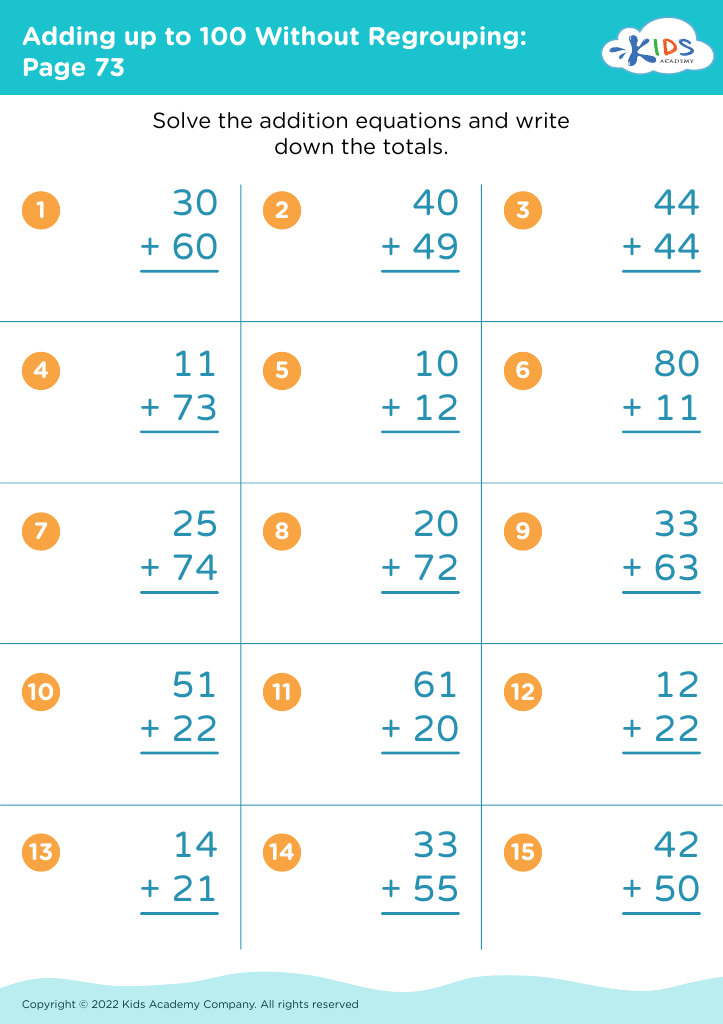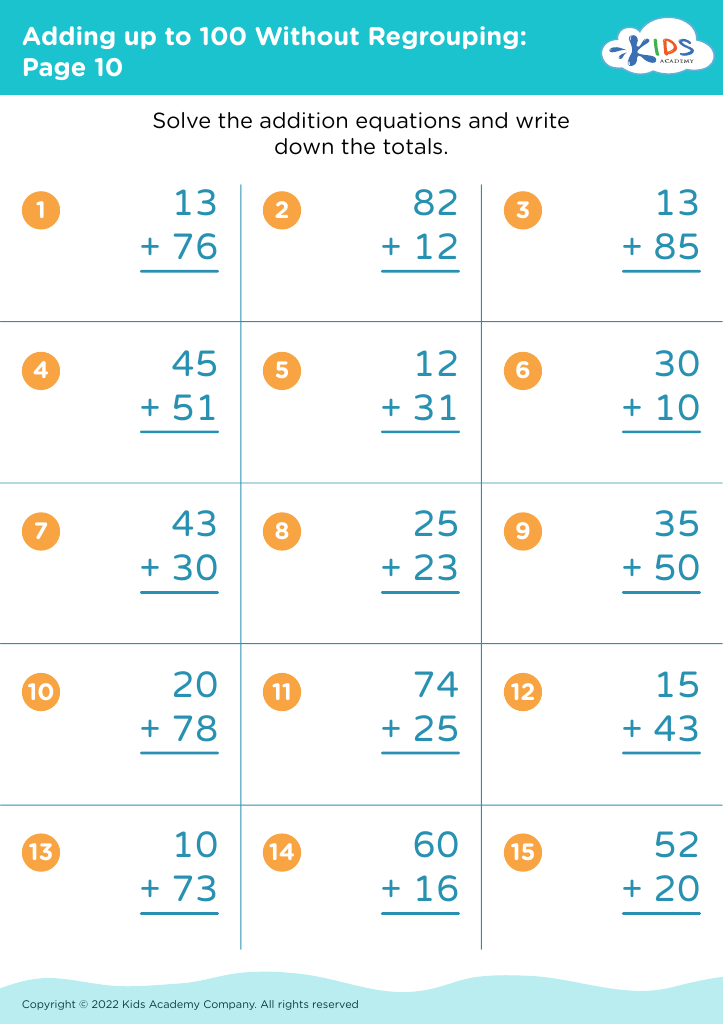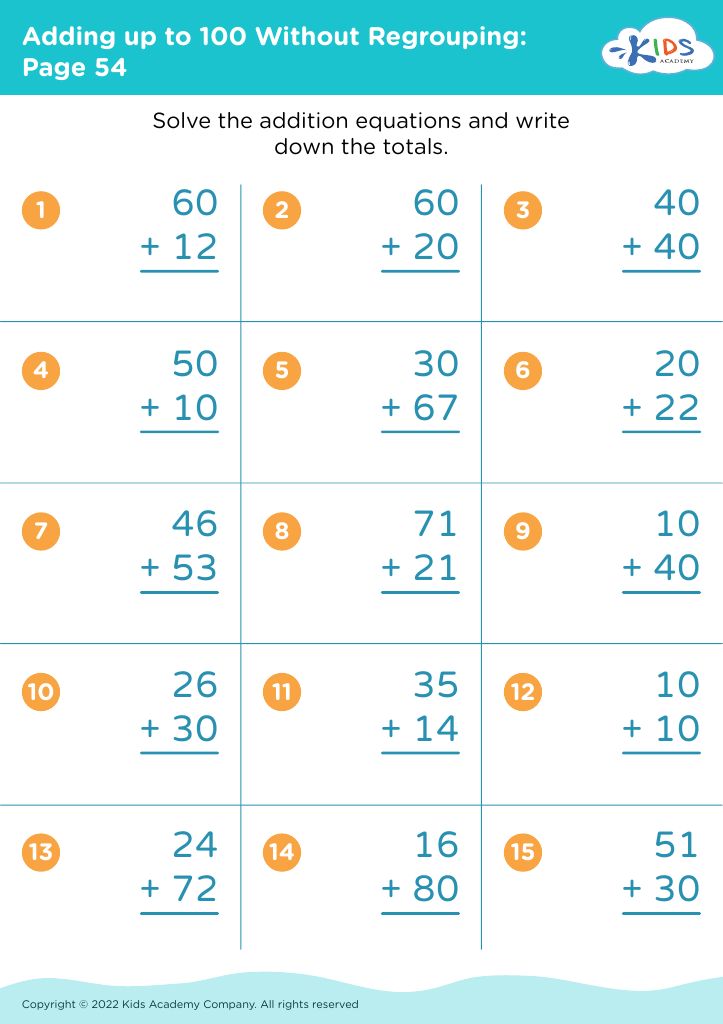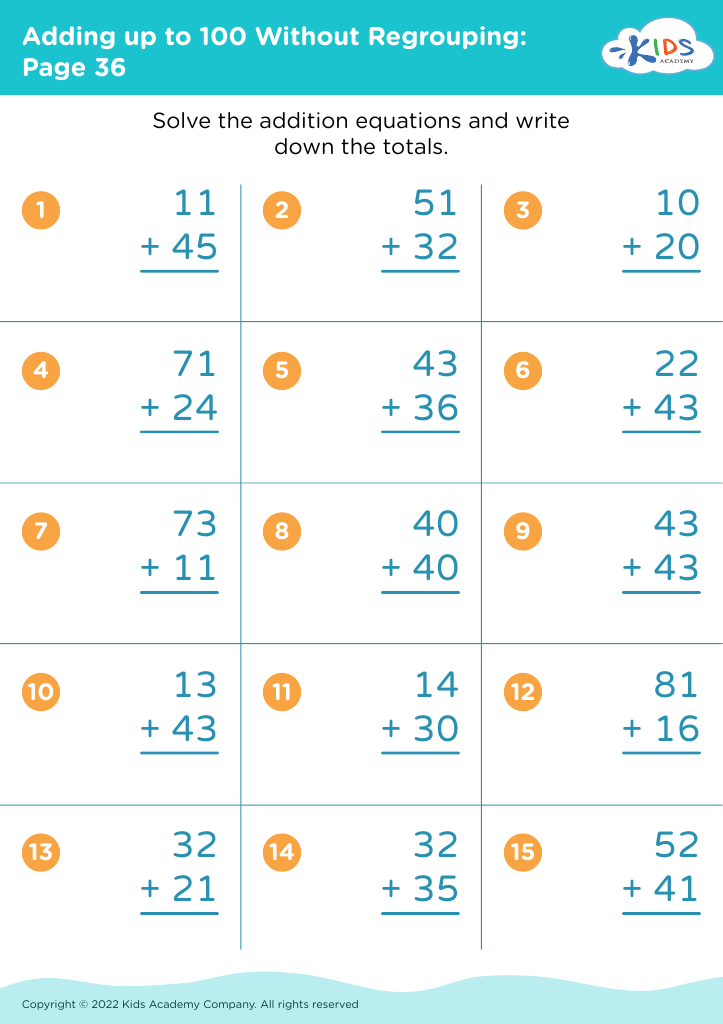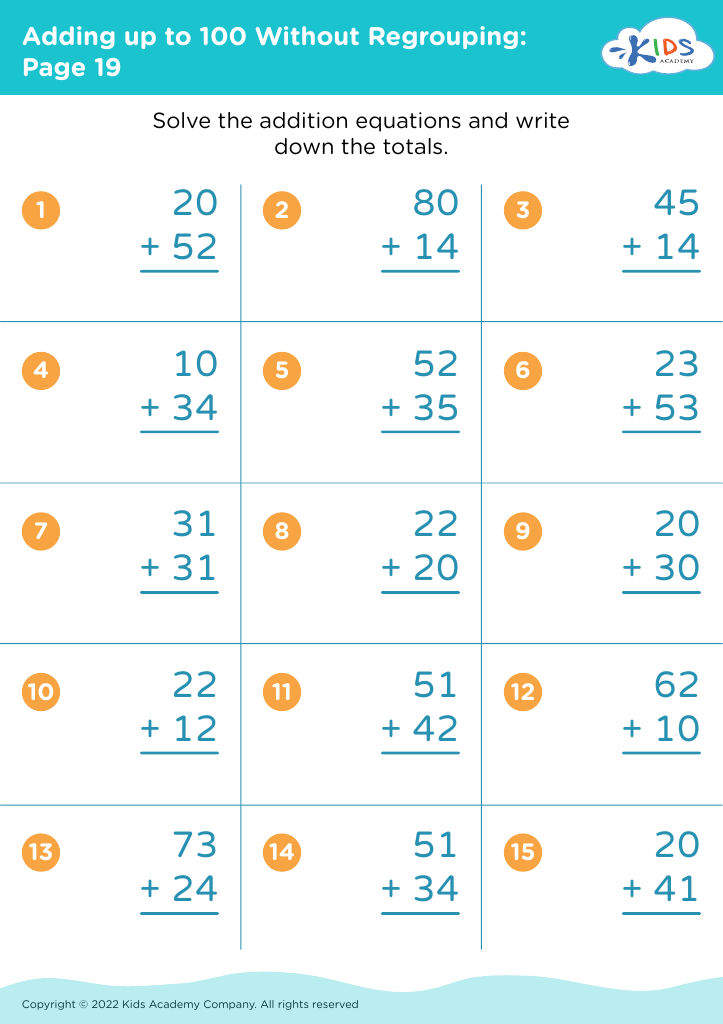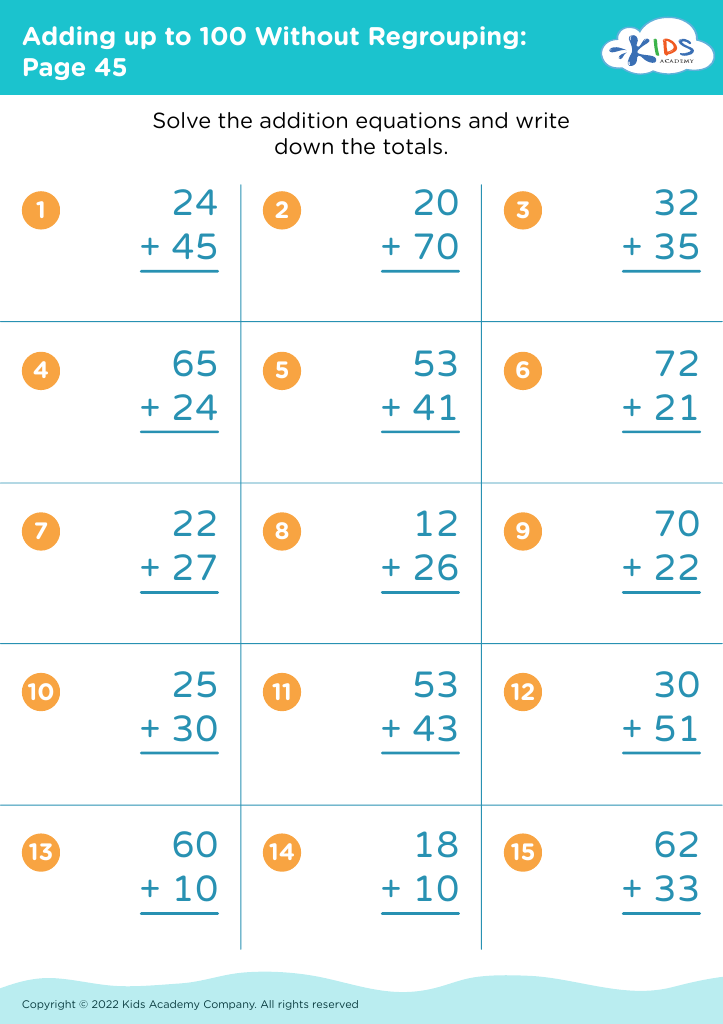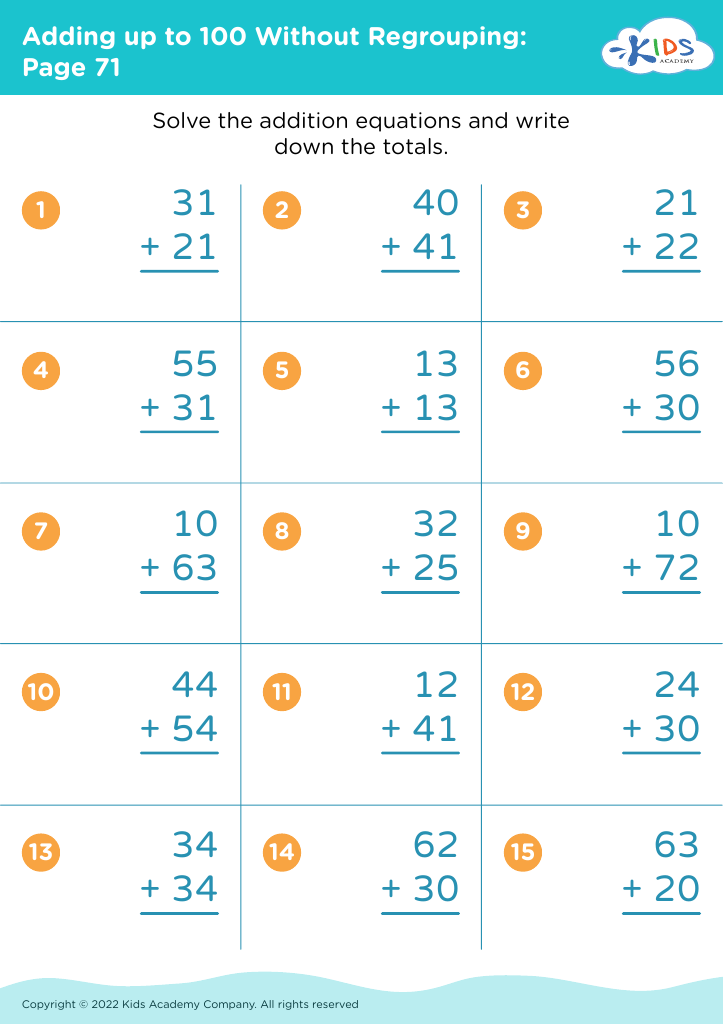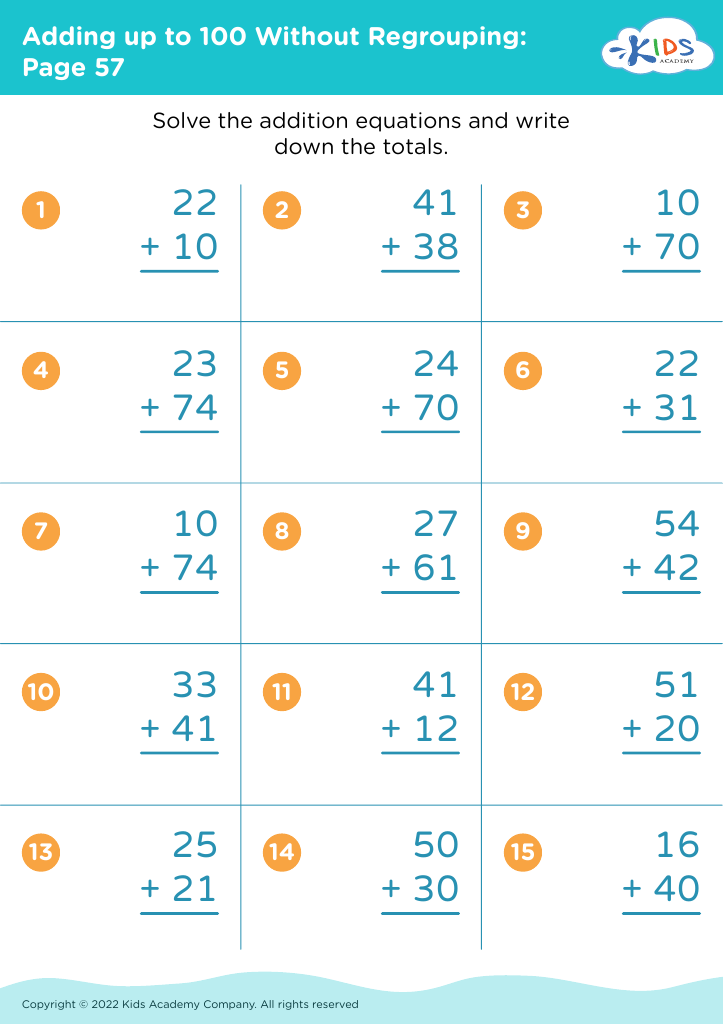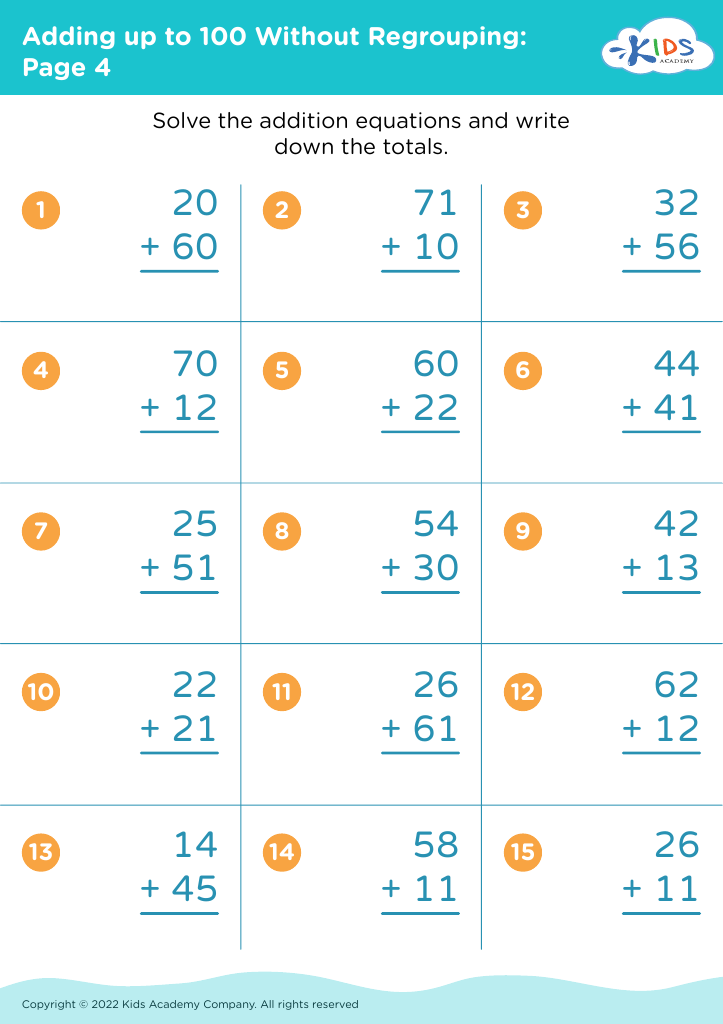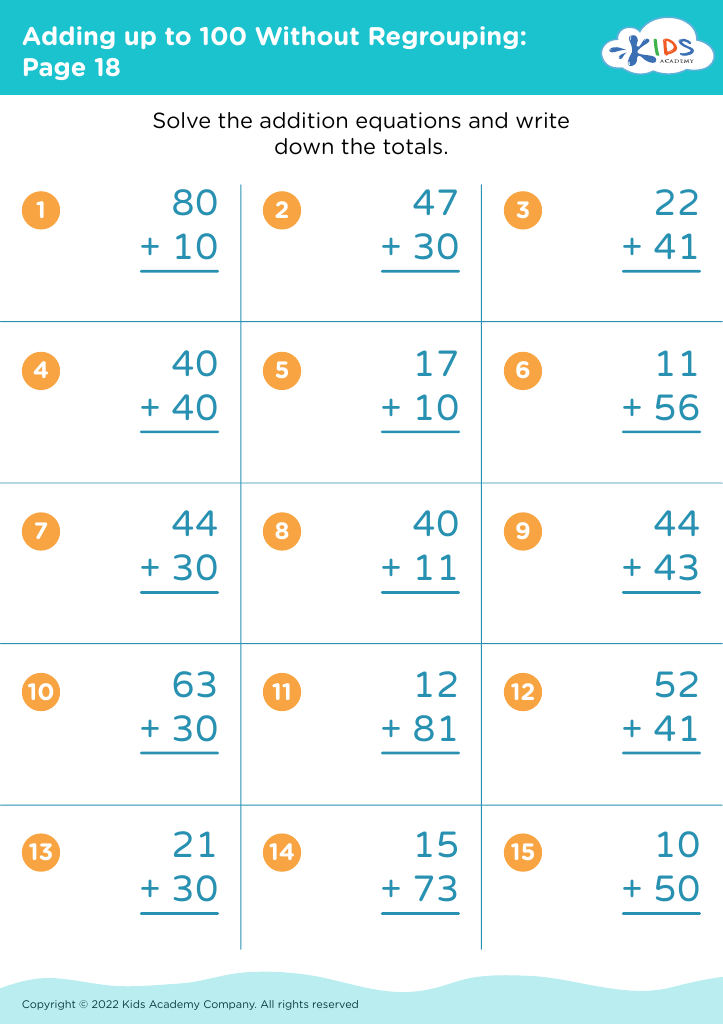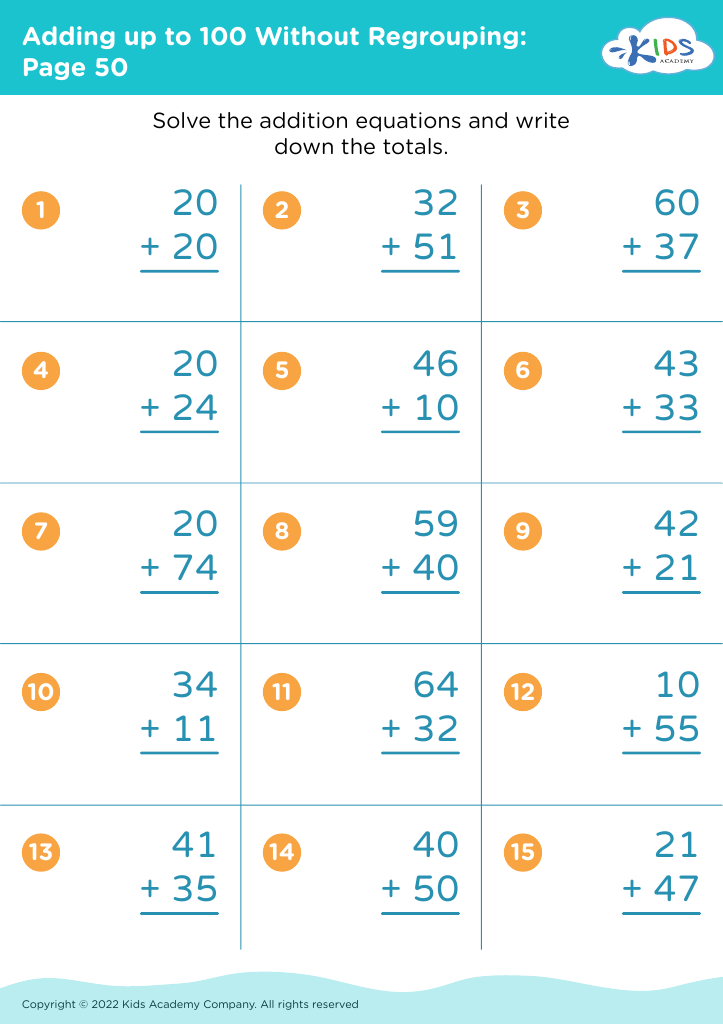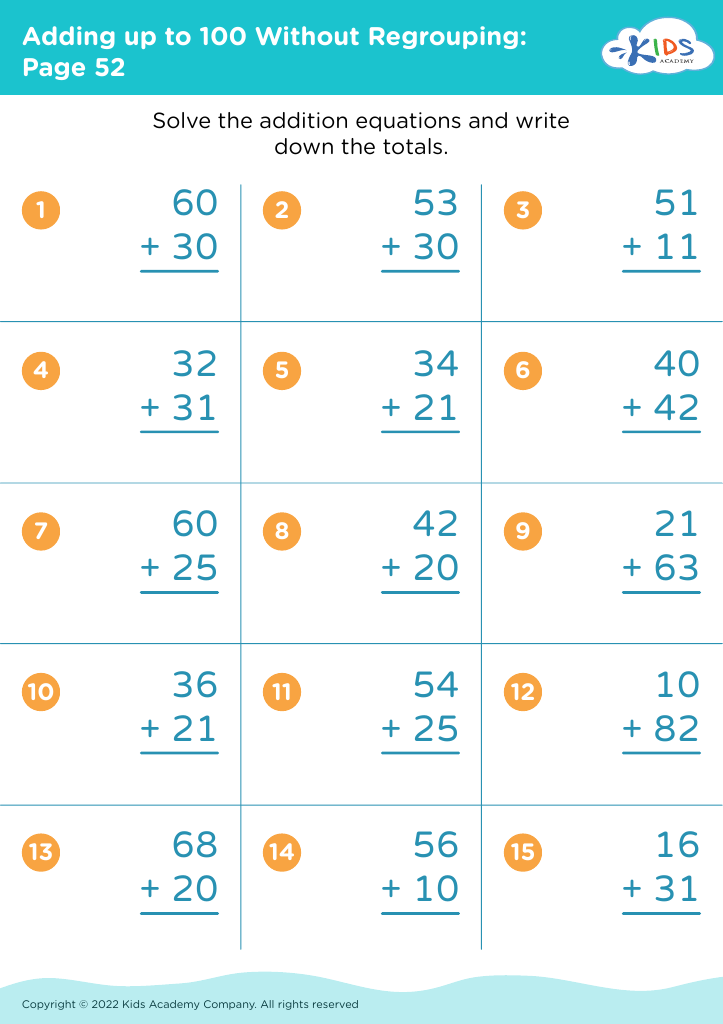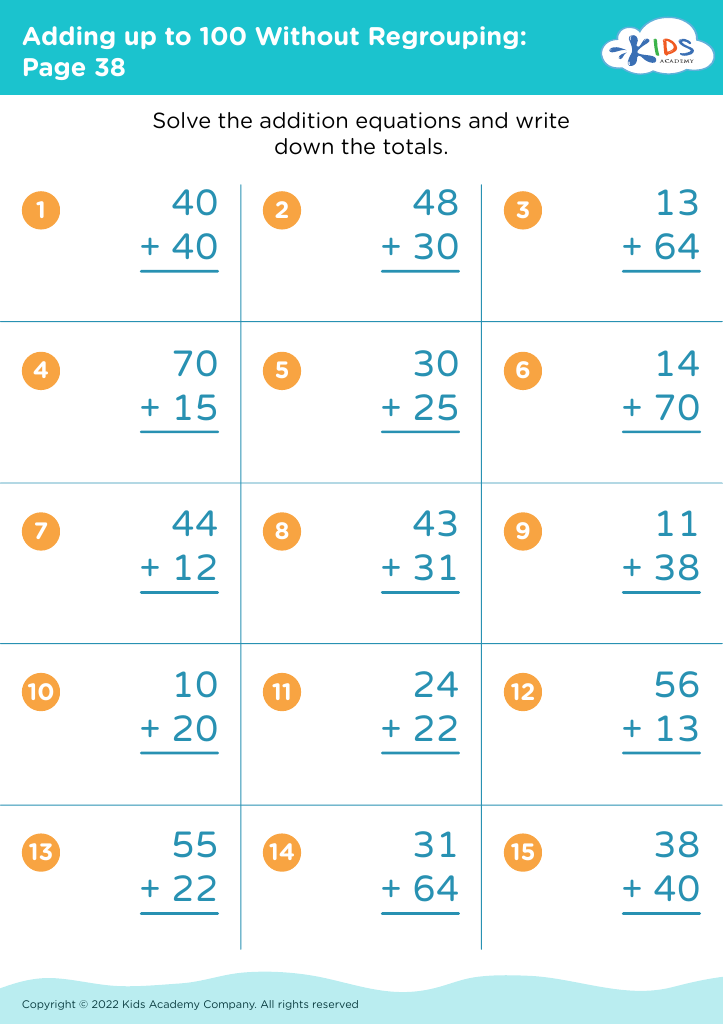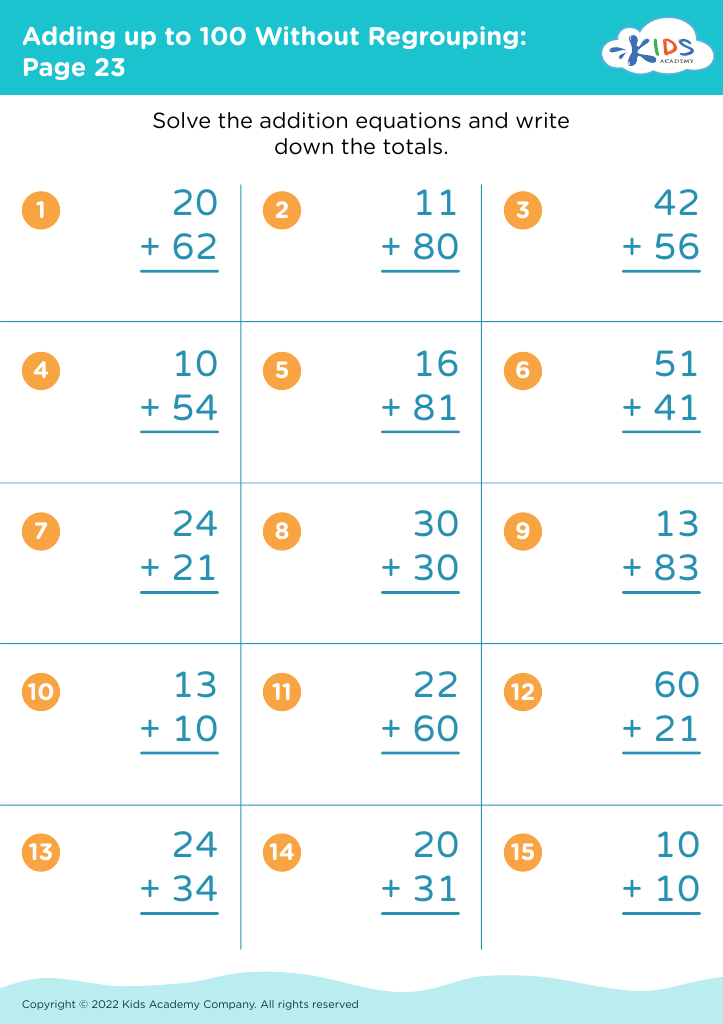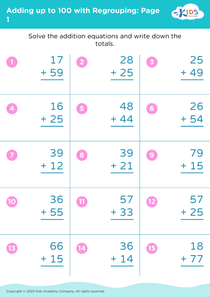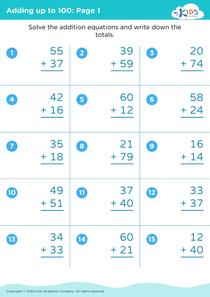Understanding fractions Adding up to 100 Without Regrouping Worksheets for Ages 7-9
19 filtered results
-
From - To
Discover our "Understanding Fractions: Adding up to 100 Without Regrouping Worksheets" tailored for children aged 7-9. These engaging worksheets provide a solid foundation in fractions while focusing on addition without regrouping, ensuring a stress-free learning experience. Perfect for young learners, the activities promote confidence and accuracy in math skills, featuring vibrant illustrations and easy-to-follow instructions. With our carefully crafted exercises, kids will build essential math skills and enjoy learning at their own pace. Ideal for classroom use or extra practice at home, these worksheets make mastering fractions fun and interactive for every child. Help your child succeed in math today!
Understanding fractions and their corresponding sums totaling 100 without regrouping is a foundational math skill crucial for children aged 7-9. It lays the groundwork for more advanced mathematical concepts and everyday practical applications. At this age, students transition from basic counting and simple addition to more complex mathematical thinking.
Parents and teachers should prioritize this because it develops number sense and proportional reasoning, critical for subjects involving measurements, data interpretation, and financial literacy. For instance, recognizing that 50/100 + 25/100 = 75/100 without regrouping facilitates comprehension of fractions, decimals, and percentages interchangeably - skills requisite in adulthood for budgeting, cooking, or even time management.
Moreover, learning fractions help sharpen problem-solving abilities and logical strategies. It experimentally teaches kids the value of parts-to-whole relationships, an approach essential in science and engineering fields.
This also aids in visual and spatial understanding by using fraction models, number lines, and pie charts, engaging multiple learning styles, and captivating interest. Therefore, familiarity with such fraction assignments fosters confidence and readiness in mathematics while preparing them for complex concepts in higher grade levels, solidifying math success and a positive educational journey.
